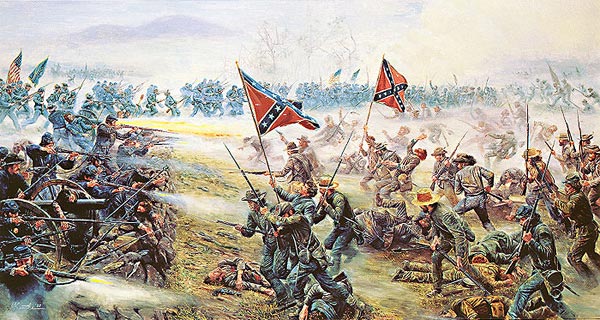Who's that Girl?
Overcoming Dissidence in Your Leadership Inner Circle
Originally posted: August 13, 2020 on TrishMcFarlane.com
*Updated article*
What does a leader do when he/she can’t rely on their inner circle? What happens when members of that inner circle outright oppose the leader or at least, through their actions and in-actions, act contrary to the leader’s intent?
These are questions that cut right to the heart of human interaction. You’ll find it comes up in the boardroom, in businesses all around the world, in school committees, in churches and temples, in girl and boy scout troops, and yes, even in your own home and family. It’s because there are so many situations where a leader is needed and a leader cannot be successful without an inner circle they can trust and rely on.
I’ve wrestled with these questions over the years, as I’m certain you have. Ten years ago, I was given the insight to understand just how tyranny in the inner circle can destroy success. As I participated in the Leadership Experience at Gettysburg hosted by The Conference Board, which I strongly encourage you to consider attending, questions like these are the ones we explored. The Civil War, and many military engagements, are microcosms where leadership plays out at its best and at its worst. 
Let me take you back to the days of Robert E. Lee, the Civil War, and specifically, the Battle of Gettysburg. If you’re like me, you have not spent a great deal of time learning all the details of the three days spent there back in 1863. The three days that had the potential to end the Civil War.
General Robert E. Lee is known as the man who lost the Battle of Gettysburg based on his inability to effectively lead his inner circle, misjudging the level of technology in the weapons of the Army of the Potomac, and not operating with enough intelligence of his competitor’s intent and location. In this leadership experience, I studied each of the Generals. I learned what their background was, their leadership style, their personal strengths and insecurities, and their opinion of how things should play out on those fateful three days. It really was no different than the styles and backgrounds of leaders in organizations today.
General Lee had four Generals he was relying on at the Battle of Gettysburg:
- General Longstreet, his closest confidant, was an experienced leader who had a track record of being someone that Lee could trust and rely on. On this occasion however, Longstreet believed that Lee needed to pull back the Confederate Army and retreat several miles back so they could “dig in” and wait for the Union Army to come to them. This was in direct opposition to Lee’s desire to proceed with an offensive battle. Longstreet is believed to have taken longer than Lee wanted him to in attacking on Day 2, thus costing the Confederates an advantage. While Longstreet may have thought his approach was superior, he was not communicating to General Lee in such a way to convince him that the ultimate intent of destroying the Army of the Potomac would be met.
- General A.P. Hill was instructed not to engage the enemy, yet on what is now Day 1 of the battle, Hill made the decision to fire on the Union soldiers and thus start this battle. With little idea of exactly how many men they would be facing, Hill made a critical error in judgement and Lee let him know this in no uncertain terms. When General Hill decided to operate out of scope without notifying General Lee, all credibility was lost. His actions certainly did not support the intent of the mission.
- General Ewell was someone that Lee had recently appointed to lead. Ewell had been brought up under General Stonewall Jackson and with Jackson’s recent death, Lee believed Ewell could step in his place. Little did Lee know that Ewell was fighting demons of his own and that he would ultimately not have the drive to seize the opportunity of taking Cemetery Hill, as Lee wanted him to, when he had the chance. This was critical and lost some of the ability to have the high ground for the Confederate Army.
- General Stuart was to play the role of collecting information on the size and location of General Meade’s army. Some believe he was out “joyriding” and others believe he was just caught too far east to get back to Gettysburg to warn General Lee. Either way, a man that Lee relied on was not there to give him the critical information he needed.
Whenever a leader has an inner circle that operates with their own individual agendas, it is nearly impossible to be successful. In your organization, is this at play? Do you have a leader that not only articulates the intent of the mission but who can also inspire the action and support of their inner circle?
Here are my questions for you:
What are the risks in current day organizations when the inner circle operates out of scope?
What can a leader do to get control back once they have direct reports who are no longer sharing in the vision?
Share your thoughts in the comments.

Author
Categories
Tags
Share
Related Posts
How we can help
Led by Trish Steed and Steve Boese, H3 HR Advisors harnesses over 40 years of experience to delivery HCM insights and guidance to global organizations.
H3 HR Advisory services
By leveraging technology, analytics, and our deep industry knowledge we can help you to reposition your workforce and ensure that you have the right people with the right capabilities in the right roles to positively impact the growth of your business.
HR Happy Hour Podcast Network
Created in 2009, The HR Happy Hour Show is hosted by Steve Boese and Trish Steed and is the longest continuously running internet radio show and podcast on Human Resources, HR Technology, Talent Practices, Workplace and Leadership topics.
H3 HR Speaking Services
We work closely with every client to customize your content - keynotes, webinars, research, infographics, and buyer’s guides - to inspire, educate and inform the audience enabling you to reset and realign your organization for a talent-led breakthrough.
Get in touch
Talk to us today and find out how we can help you and your organization leverage HCM technology to attract, onboard, retain and manage top talent.


